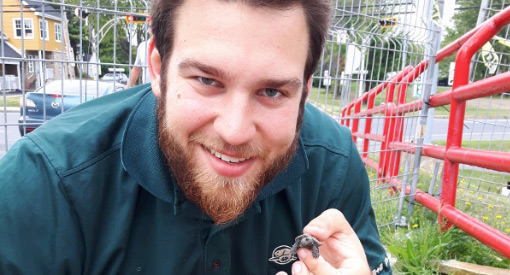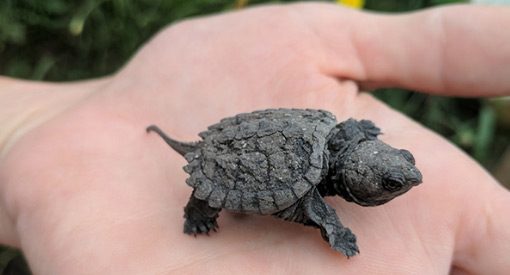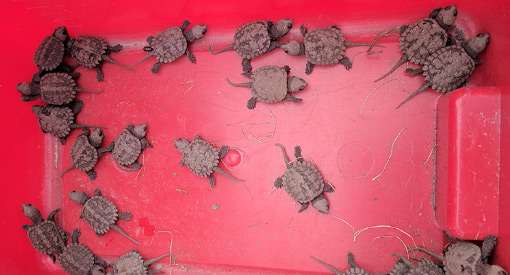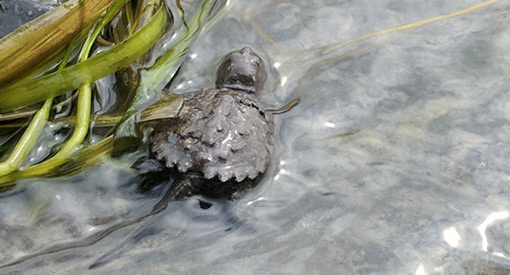
A turtle nest under close surveillance
Chambly Canal National Historic Site
Managers of national parks and historic sites and canals face a considerable challenge: how do you showcase a site so people will discover it while protecting its plant and animal life?
The Chambly Canal National Historic Site came up against just such a challenge, as a mother turtle chose a very special site to bring her young ones into the world.
24 snapping turtles are born at the Chambly Canal National Historic Site!




On the side of the road
On a June morning, a visitor called to report seeing a turtle laying eggs under a guardrail near a busy, high-traffic area at the Chambly Canal National Historic Site. This immediately sounded the alarm. Action was required to protect the nest and prevent the predation of the 20-some eggs it contained.
A Custom-made Pen
It was agreed that a wire cage resembling a pen should be built to protect the eggs. That is how a veritable security perimeter was set up on the edge of the canal, to the great delight of the team concerned about the birth and release of the turtles.
A Daily Watch
Once the cage was installed, the bridgemaster at the Chambly Canal kept daily watch over the nest. Day after day for more than two months, she made sure that all the conditions were right so the eggs would hatch. Finally, one hot Sunday in August, some tiny, discreet, barely audible cracking noises could be heard. Twenty-four turtles hatched, ready to explore the world. Twenty-four! It was immediately determined that they were snapping turtles, which are considered a species of special concern under the Species at Risk Act. What a wonderful gift for the Parks Canada Agency, which is redoubling its efforts to conserve threatened species.
Going home
Soon after the young have hatched, turtles were released from their cage guided to the nearby Richelieu River. They lost no time diving head first into their new lives.
- Date modified :